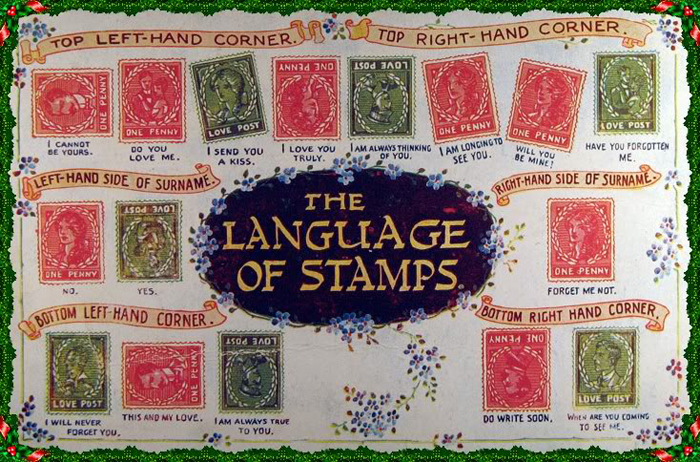The language of stamps emerged in the early twentieth century, during the Victorian era. Stamp placement became a discreet way of communicating affection during a courtship–this method was especially favored by young lovers whose parents often censored mail. And it became more widely favored when postcards grew in popularity. You wouldn’t want the postman to freely read all your heart’s desire, would you?
The code varied based on the language spoken. Sometimes lovers or pen pals would create their own secret code as a way of adding fun and mystery to their correspondence. Today the language of stamps is rarely used, except in war zones and in prisons. I say we bring it back!
Here’s a little code to get you started…
center of envelope at top: yes
center of envelope at bottom: no
upside down and diagonally: I miss you
sideways, head to the right: love + kisses
sideways, head to the left: I promise not to leave you
upside down, top right corner: I love you or lovesick
diagonally on top left corner: My heart is another’s
straight up and down: Goodbye sweetheart
upside down, top right corner: Do you love me?
right angle, top left corner: I hate you
upright top right corner: I desire your friendship
upright in line with recipient’s surname: accept my love
right angle in line with recipient’s surname: I long to see you
centered on right edge: write immediately
Would you ever use a secret stamp code in your correspondence? I love the historical significance and think it just oozes romance!
P.S. It strangely reminds me of my youth, when pagers or beepers were all the rage. My friends and I would “beep” each other number codes, like 143 for I love you. Ha!

Wow! I never knew that was something done. This was such an interesting post!
Thanks so much for posting about this! So interesting!